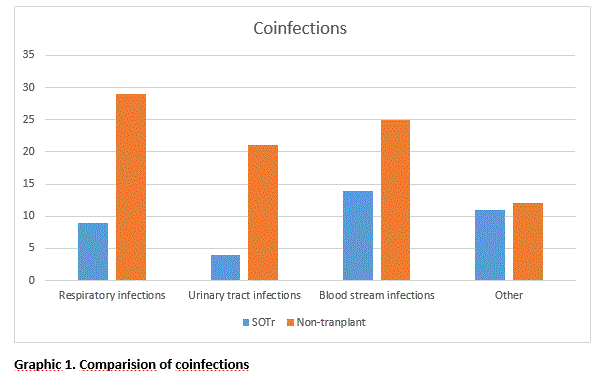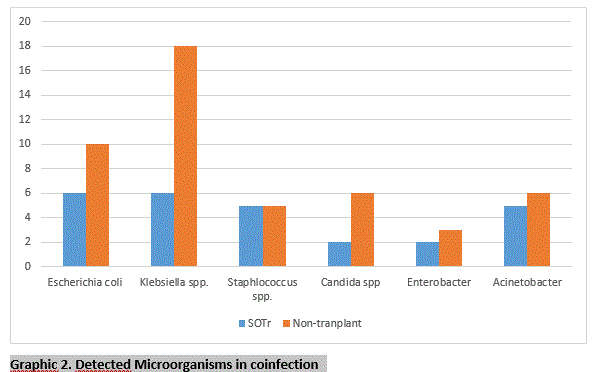Comparision of invasive pulmoner aspergillosis between transplant and non-transplant patient
Tugba Yanik Yalcin1, Elif Ates1, Cagla Sarikas1, Adem Safak2, Helin Sahinturk3, Hande Arslan1, Mehmet A. Haberal2.
1Department of Infectious Diseases and Clinical Microbiology, Baskent University, Ankara, Turkey; 2Department of General Surgery, Division of Transplantation, Baskent University, Ankara, Turkey; 3Department of Anaesthiology and Reanimation, Baskent University, Ankara, Turkey
Introduction: Invasive fungal infections are a significant cause of morbidity and mortality in solid organ transplant recipients (SOTr). This study aims to evaluate patients with invasive pulmonary aspergillosis (IPA) among SOTr and non-transplant individuals.
Methods: We conducted a retrospective study of patients with bronchoalveolar lavage galactomannan (BAL GM) positivity at Baskent University Hospital in Ankara, Turkey, from 2016 to 2023. Patient data were retrieved from medical records. Inclusion criteria were age ≥18 years,at least one BAL GM positivity, and antifungal therapy given for IPA. In case of repeated positive results, the first GM level was included. Patients' data were compared using SPSS 26.
Results: The study included 199 patients, with 40 (20.1%) being SOTr. In both groups, the majority were male (67.8%) and inpatients (86.4%). The median age was higher in the non-transplant group (72; p<0.001). Respiratory symptoms at admission were high in both group (92%). Chest CT signs were higher in SOTr than non-transplant , but not statistically significant (72.5%; 57.5%, respectively). Aspergillus spp. was the most frequently detected mold type in all group (85.7%). Before the diagnosis of IPA, antibiotic usage was high (75.9%), and previous ICU stay was 43.7% in all group. Coinfections were detected in both groups, with higher rates in SOTr (67.5%; p=0.006). Graphic 1 displays the distribution of coinfections. Bloodstream infections (BSIs) and respiratory tract infections were the most common coinfections in SOTr, whereas BSIs and urinary tract infections were most common in non-transplant. Enterobacterales were the most common detected microorganisms in coinfections, as shown in Graphic 2.
Conclusion: Based on our findings, it is observed that IPA occurs at an earlier age in solid organ transplant recipients (SOTr). Although not statistically significant, chest CT findings were higher in the SOTr group. This observation once again highlights the more invasive nature of IPA in individuals undergoing immunosuppression. Clinicians should be mindful of the higher rates of coinfection.


